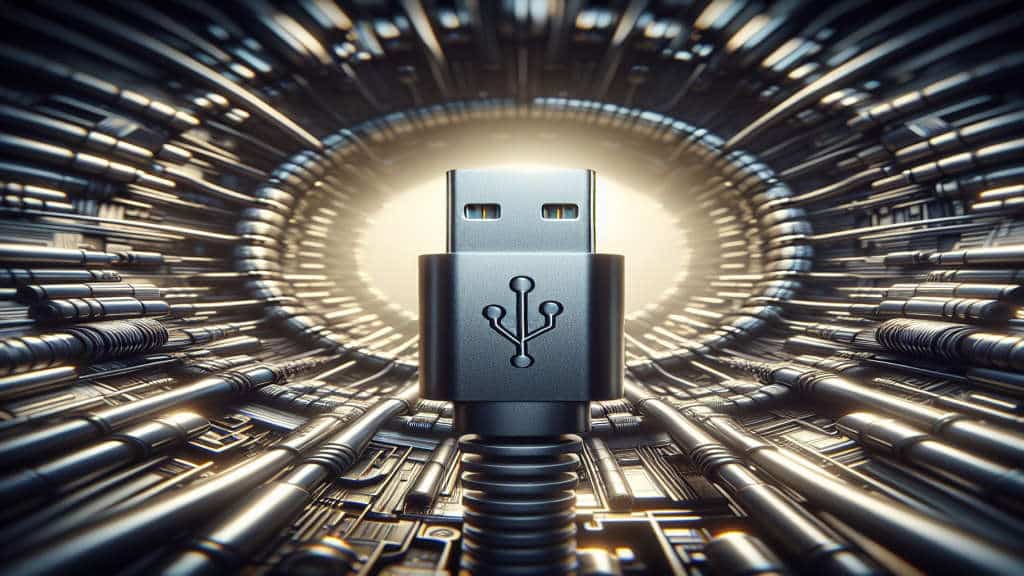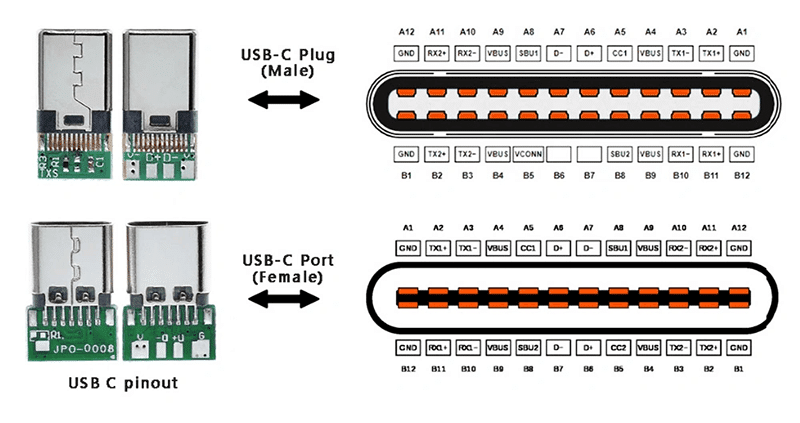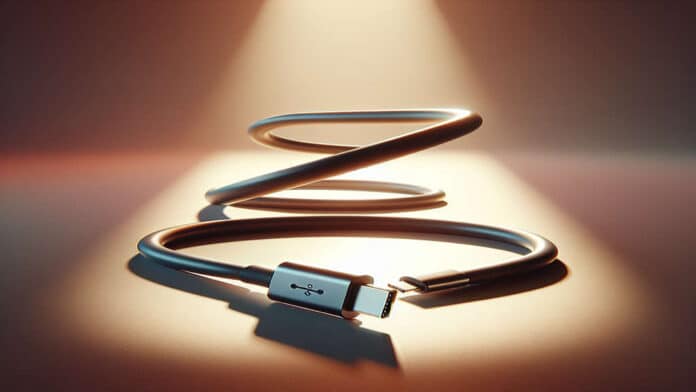Table of Contents
USB Type-C cable is versatile and widely used, and it has become a standard for charging and data transfer. Understanding the pins and functions of a USB Type-C cable is essential for ensuring compatibility and proper use with various devices. In this blog, we will explore the different pins and functions of a USB Type-C cable and how they contribute to its functionality.

USB Type-C Connector: Pin Layout and Signal Distribution
The USB Type-C connector, with its increasing popularity driven by its versatility and high data transfer speeds, is a practical choice for modern electronic devices. Understanding its pin layout and signal distribution is not just essential, but also highly relevant for anyone working with such devices. Let’s delve into a detailed exploration of how the pins are laid out and how signals are distributed within the USB Type-C connector:
Pin Layout:
- The USB Type-C connector has 24 pins arranged in a specific layout for different functionalities.
- The design allocates Pin 1 and 2 for VBUS (power) signals.
- Pins 3 and 4 are for Thunderbolt™ and USB 3.1 interface.
- Pins 5 and 6 serve as the Configuration Channel (CC).
- Other pins handle various purposes, including ground connections, audio, and display signals.
Signal Distribution:
- The USB Type-C connector supports multiple protocols, including USB 3.1, Thunderbolt™, DisplayPort, and more.
- These protocols can be transmitted over a single connector through advanced signal multiplexing, providing greater flexibility for device connectivity.
- Power delivery signals are also distributed through the USB Type-C connector, allowing for fast charging and power transfer between devices.
Comprehending the intricacies of the USB Type-C connector’s pin layout and signal distribution is crucial for engineers and designers working on cutting-edge electronic products.

Multifunctionality of USB Type-C: Power Delivery and Data Transfer Abilities
In today’s technology-driven world, USB Type-C has revolutionized connecting and transferring data. It offers faster data transfer speeds and provides power delivery capabilities, making it a multifunctional and versatile tool for various devices.
The Power of USB Type-C
The power delivery feature of USB Type-C allows for fast device charging, simplifying the user experience, reducing e-waste, and promoting sustainability by eliminating the need for multiple chargers and adapters.
Efficient Data Transfer
With its high-speed data transfer abilities, USB Type-C enables seamless and rapid file transfers between devices—this benefits professionals and businesses, allowing for increased productivity and efficient workflow.
Finale
As technology continues to evolve, USB Type-C remains at the forefront of innovation, offering the convenience of power delivery and data transfer efficiency in one versatile connector.
| Benefit | Advantage |
|---|---|
| Fast Charging | Saves time and reduces clutter |
| High-Speed Data Transfer | Enhances productivity and workflow |
An In-Depth Look at USB Type-C Alternate Modes: Expanding Beyond USB Functionality
USB Type-C Alternate Modes is a revolutionary feature that expands the capabilities of the standard USB interface. With the ability to support various alternate modes, such as DisplayPort, HDMI, and Thunderbolt, USB Type-C is no longer limited to data transfer and power delivery. This versatility opens up a world of possibilities for devices and peripherals, allowing for seamless connectivity and enhanced functionality.
The Role of USB Type-C E-Mark Chips: Ensuring Cable Integrity and Performance
The USB Type-C E-Mark chips play a crucial role in guaranteeing the integrity and performance of USB Type-C cables. These chips are responsible for authenticating the cables, ensuring they meet the specifications for power delivery, data transfer, and other functionalities. By communicating with the connected devices, E-Mark chips help prevent potential issues such as overloading or overheating. Additionally, they enable efficient and reliable performance of USB Type-C cables, making them an essential component for modern devices.
Advancements in USB Type-C Technology: Current Capabilities and Future Prospects
The rapid evolution of USB Type-C technology has brought about significant advancements in connectivity and device compatibility. USB Type-C has revolutionized how we connect and charge our devices with its reversible design and high-speed data transfer capabilities.
Current Capabilities
USB Type-C cables can carry power, data, and video signals, making them versatile and efficient. Their ability to deliver up to 100W of power has made them essential for fast charging and powering a wide range of devices.
Future Prospects
As technology evolves, we can expect USB Type-C to become even more versatile, with improved data transfer speeds and the potential for even higher power delivery. Its potential to become the standard for all devices makes it an essential component in the future of connectivity.



